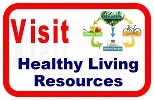Posted 4/16/2010
by Linda E. Wegner

Some children are a joy to be around. They are pleasant and polite and treat others with respect. Other hcildren are very different. They may be noisy, rude, and defiant. Does one of these describe your child (children) or are they somewhere in between? Most parents want well-behaved children and the best way to achieve that goal is to teach good manners from the beginning. Parents can teach manners through direct teaching, reminding, and setting a good example.
What are manners?
Manners are skills for showing respect to others and to yourself. They are based on kindness and common sense. Good manners help social situations run more smoothly. Teaching your children to use good manners at home and away from home makes life more pleasant for everyone.
And knowing how to be polite will give children self-confidence and help them avoid embarrassment. All of us have had that shrinking feeling when we do something rude or unkind in public. Children feel the same way. Teaching good manners by correcting a child won’t harm his/her self-esteem. In fact, it will improve self-esteem because others will respond positively to their good manners.
Posted 4/12/2010
by Info from Jean Griffiths

Cornell University's Western Equestrian Team Club has announced the schedule and classes for its Open Horse Show to be held on May 2, 2010 at the Trumansburg Farigrounds. Divisions include adult, youth 18 and under and novice. There will be two stake classes paying $100 each and ribbons will be awarded for first through fifth places. Fees are $5 per class and $10 per stake class. Download class list. For more information contact Allyson Jones-Brimmer at 315-783-3984 or arj37@cornell.edu.
Posted 4/12/2010
by Linda E. Wegner

Help Win $5,000 for Your State 4-H Program! Here’s a fun and exciting way to be a part of 4-H’s success! During the month of April, join 4-H’s Give2Vote Challenge by texting CLOVER to 50555 to give $10 in support of 4-H in your state. You can also take the Challenge by making a secure online donation at 4-H.org to benefit your state 4-H program.
When you give, you vote! Each $10 mobile gift or online donation counts as one “vote” towards your state. The state with the most “votes” at the end of the Challenge receives an additional $5,000. It’s that easy! Voting ends April 30th.
If you are under 18, be sure to get a parent or guardian’s permission before participating.
Posted 4/9/2010
by Roseann Doran

Congratulations to Rebecca Lawton who was the winner of a great nutrition information-packed basket of goodies from the drawing that took place at the Liberty Employee Wellness Fair held on March 26th. Rebecca claimed her prize at the Cooperative Extension office in Johnstown. Congratulations!
Posted 4/9/2010
by Karen Kosinski

You can support the local 4-H Program in Fulton & Montgomery Counties through April 18th by stopping by the Tractor Supply Store in either Gloversville or Amsterdam and purchasing a paper clover! Tractor Supply Stores across the nation are conducting a Paper Clover Campaign to bring attention to the value of the 4-H Programs in their communities and to raise money to help support the local programs. "I've visited the managers of both of our local stores and they are very enthusiastic about this campaign", says Karen Kosinski, Public Affairs Coordinator for Cornell Cooperative Extension in Fulton and Montgomery Counties. "The clovers are covering the front windows and doors and filling up the interior walls near the cash registers at the stores. Store employees are embracing the campaign, too, and offering customers the opportunity to participate. We are very grateful for the local support." says Kosinski. You are encouraged to stop by one of the stores and purchase your paper clover or make a donation using the "Donate" button at the right. Either way, we thank you!
Posted 4/7/2010
by Linda E. Wegner

The movie "Home Alone" caught the attention of many people. Producers capitalized on humor surrounding the adventures of a child left home alone by mistake. Although the parents in this movie did not intend to leave their child, many parents must make decisions regarding their child's ability to be home alone. The decision to do so is complicated and depends upon the individual child.
As a child care provider, a parent may ask you about a child's readiness to stay by him or herself. There is no single answer to this question, no magical age or single indicator that ensures a child is ready to stay at home alone (or with younger siblings). Some states have made laws that specify an age (e.g., 10 years) below which it is illegal to leave children alone. Other states do not set a specific age, but rather, consider the maturity level of the child. Be sure to check with your state child welfare agency to learn about the regulations in your state.
Posted 4/2/2010
by From Montgomery County Tourism Office

I LOVE NEW YORK, (www.iloveny.com), New York State’s tourism promotion agency, and EscapeMaker.com are seeking to celebrate those individuals who are doing their part to keep the Empire State green with the first-ever contest to find “The Greenest New Yorker.”
I LOVE NEW YORK is looking for those New York State residents who are making earnest efforts to preserve the environment in their everyday lives and the lives of others.
Posted 3/25/2010
by Craig Clark

Download the attached file for details about upcoming webcasts being offered by the U.S. Environmental Protection Agency (EPA). All webcasts are offered free of charge, but space may be limited.
EPA hosts the Local Climate and Energy Webcast Series to assist local government with climate change and clean energy efforts. These regular webcasts highlight EPA resources available to local governments, and present examples of successful climate and energy programs and policies implemented locally.
ENERGY STAR offers free online training to help you improve the energy performance of your organization.
For more information or to view past webcasts, visit: http://www.epa.gov/statelocalclimate/web-podcasts/local-webcasts-by-date.html
Posted 3/25/2010
by Craig Clark

Sorting out the new health care reform bill may be difficult at best, but Karl Pillemer, Ph.D., professor of human development in the College of Human Ecology at Cornell University and Associate Dean for Extension and Outreach suggests a website by The Kaiser Family Foundation can clear up confusion about what is covered in the new health reform legislation. Dr. Pillemer, a Ph.D. in sociology with a specialization in gerontology, holds positions as a faculty member at the Weill Cornell Medical College and the Director of the Cornell Institute for Translational Research on Aging. The Kaiser Family Foundation website is http://www.kff.org/healthreform/sidebyside.cfm
Posted 3/25/2010
by Craig Clark

A North Carolina Extension economist, Dr. Mike Walden, offers an interesting discourse, “What Dilemma Do We Face in Health Care?” http://www.extension.org/pages/What_Dilemma_Do_We_Face_in_Health_Care%3F
Or
http://www.ncsu.edu/project/calscommblogs/news/archives/2010/03/you_decide_what_14.html
Dr. Walden is a William Neal Reynolds Professor and North Carolina Cooperative Extension economist in the Department of Agricultural and Resource Economics of N.C. State University's College of Agriculture and Life Sciences. He teaches and writes on personal finance, economic outlook and public policy.















